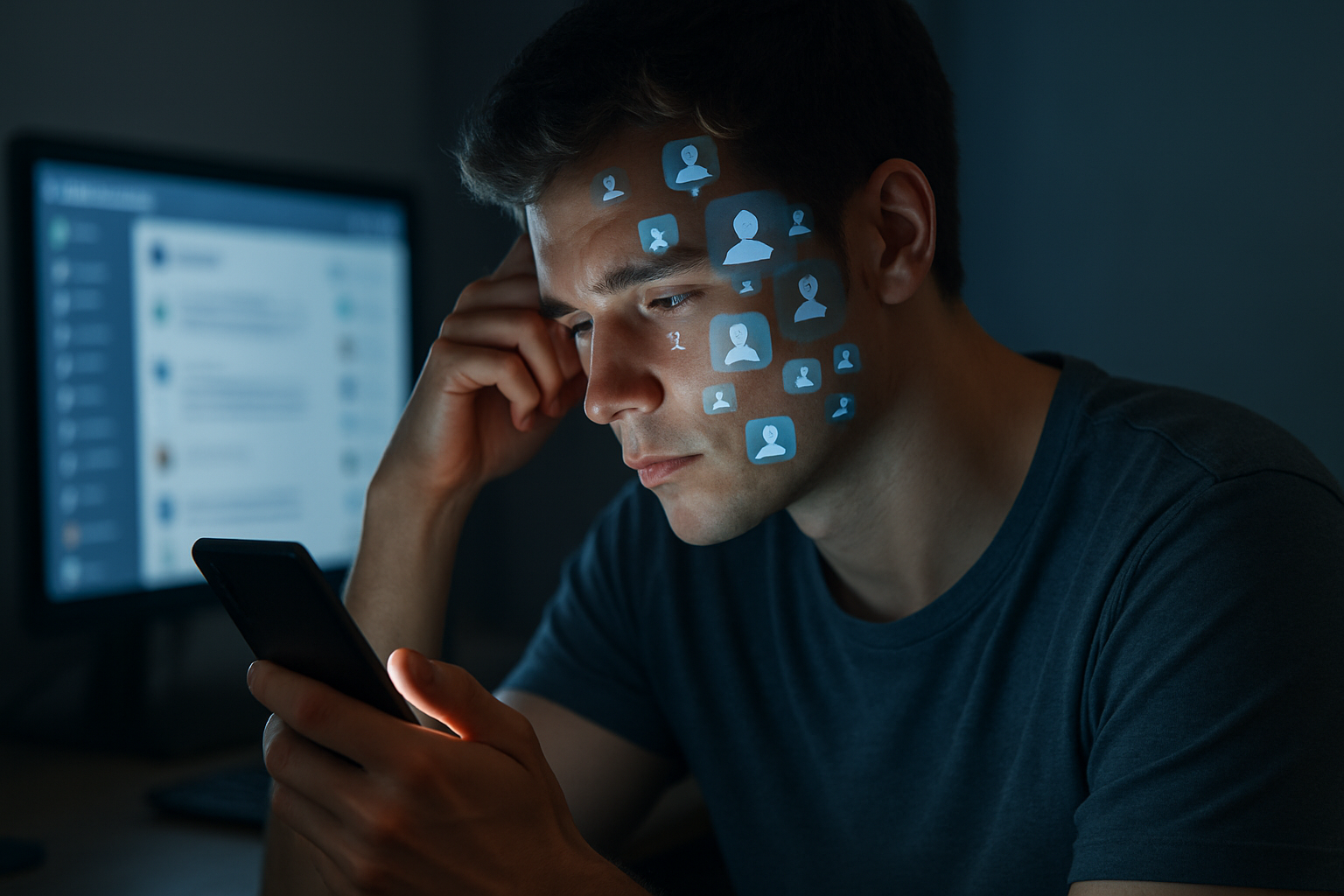Anxiety in the Digital Age: Causes, Effects, and Solutions
Anxiety disorders have become increasingly prevalent in our modern, hyper-connected world. The digital age, with its constant barrage of information, social media pressures, and ever-present technology, has significantly impacted our mental health. While technology offers numerous benefits, it has also contributed to rising anxiety levels across various demographics. This article explores the complex relationship between digital technology and anxiety, examining the causes, effects, and potential solutions to this growing concern. By understanding the interplay between our digital lives and mental well-being, we can develop strategies to navigate this new landscape and promote healthier relationships with technology.

Social Media and Self-Esteem
One of the primary contributors to digital anxiety is social media. Platforms like Instagram, Facebook, and TikTok have revolutionized how we communicate and share our lives, but they have also introduced new sources of stress and comparison. The curated nature of social media posts often leads to unrealistic expectations and feelings of inadequacy. Users may find themselves constantly comparing their lives to the highlight reels of others, leading to decreased self-esteem and increased anxiety.
Information Overload and Decision Fatigue
The digital age has made an unprecedented amount of information available at our fingertips. While this access to knowledge can be empowering, it can also lead to information overload and decision fatigue. The sheer volume of choices and data we encounter daily can overwhelm our cognitive capacities, leading to increased stress and anxiety. This constant barrage of information can make it difficult to focus, prioritize, and make decisions, further exacerbating feelings of unease and inadequacy.
The Pressure of Constant Availability
The expectation of constant availability is another significant factor contributing to digital anxiety. With smartphones and messaging apps, we are theoretically reachable at all times. This blurring of boundaries between work and personal life can lead to increased stress and difficulty in disconnecting. Many individuals feel pressured to respond immediately to messages or emails, even outside of work hours, leading to a constant state of alertness and anxiety.
Digital Detox and Mindful Tech Use
As awareness of digital anxiety grows, so do strategies to combat it. The concept of “digital detox” has gained popularity, encouraging individuals to take deliberate breaks from technology and social media. This practice can help reset one’s relationship with digital devices and reduce anxiety levels. Additionally, mindful technology use involves being more intentional about when and how we engage with digital platforms. This can include setting specific times for checking emails or social media, turning off notifications, and creating tech-free zones in the home.
Cognitive Behavioral Approaches
Cognitive Behavioral Therapy (CBT) techniques have shown promise in addressing digital anxiety. These approaches focus on identifying and challenging negative thought patterns associated with technology use. For example, CBT can help individuals recognize and reframe the cognitive distortions that arise from social media comparisons or the fear of missing out (FOMO). By developing a more balanced perspective on digital interactions, individuals can reduce anxiety and improve their overall well-being.
Tech-Enabled Mental Health Solutions
Ironically, technology itself is also being leveraged to combat digital anxiety. Mental health apps and online therapy platforms have made psychological support more accessible than ever before. These digital tools offer meditation guides, mood tracking, and even virtual therapy sessions, providing users with resources to manage their anxiety on the go. While it’s important to approach these solutions with a critical eye, they represent a promising avenue for addressing mental health concerns in the digital age.
Fostering Digital Literacy and Healthy Habits
Education plays a crucial role in mitigating digital anxiety. Promoting digital literacy from an early age can help individuals develop a healthier relationship with technology. This includes teaching critical thinking skills to evaluate online information, understanding the mechanisms behind social media algorithms, and recognizing the potential impacts of excessive screen time. By fostering these skills, we can empower individuals to navigate the digital landscape more confidently and mindfully.
The Role of Tech Companies and Policy Makers
Addressing digital anxiety is not solely the responsibility of individuals. Tech companies and policy makers have a crucial role to play in creating a healthier digital environment. This includes designing platforms with user well-being in mind, implementing features that encourage breaks and mindful usage, and being transparent about data practices. Policy makers can also contribute by enacting regulations that protect user privacy and promote digital well-being, such as the “right to disconnect” laws implemented in some countries.
In conclusion, while the digital age has brought unprecedented connectivity and access to information, it has also introduced new challenges to our mental health. Digital anxiety is a complex issue that requires a multifaceted approach. By understanding its causes and effects, we can develop strategies to mitigate its impact and foster healthier relationships with technology. Through a combination of individual mindfulness, education, technological solutions, and policy changes, we can work towards a future where the benefits of the digital age are realized without compromising our mental well-being.





